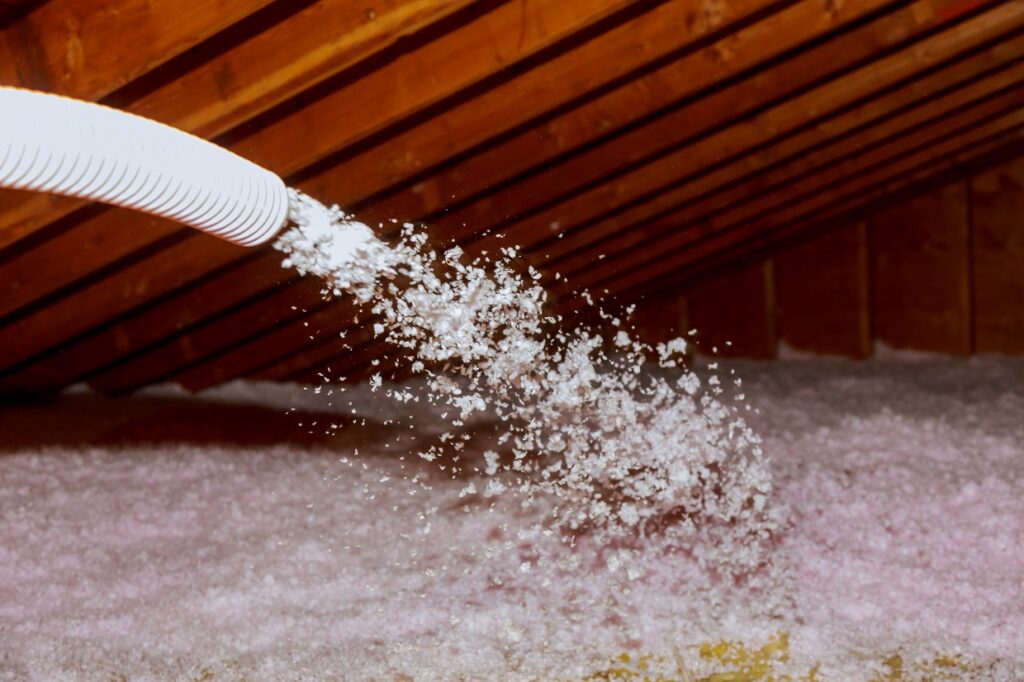Building energy codes are driving greater energy efficiency, which means tighter and better insulated buildings. But a building built just to code is only meeting the legal minimum, not delivering customer value beyond that baseline. Designing and constructing beyond code—including quality residential insulation installation—delivers buildings that are more energy efficient, quieter and healthier, which can give you a competitive advantage.
5 great reasons to insulate
1. Greater energy efficiency, lower energy bills
The value of energy efficiency is obvious: it saves homeowners money on energy bills and reduces power plant CO2 emissions to lower carbon footprints. The benefits aren’t new, but they continue to become more important as energy bills rise. Since 2004, residential electricity prices have jumped 39%.1 In fact, the average homeowner spends $2,200 per year on household energy bills—which is 4% percent of their average pre-tax income.2 By way of comparison, median household property taxes are $2,090 per year.3
2. Homeowners are demanding more
Energy efficiency is becoming increasingly important to homeowners. However, there’s generally a disconnect between the energy-efficient features most frequently being offered and those that matter most to home buyers.
In research by the National Association of Realtors:
Features that homeowners consider “very important” in environmentally friendly homes:
- 36% home heating and cooling costs
- 23% energy efficient appliances
In research by the National Association of Home Builders:
Of the top 15 features builders plan to offer, 3 relate to energy efficiency:
- Low-energy windows
- Energy Star appliances
- Energy Star windows
3. Insulation can help builders meet homeowner needs
Home buyers aren’t having their biggest priorities met by the current offerings. They’re interested in lower heating and cooling costs, but appliances have essentially* no impact on heating and cooling costs, and the impact from windows is limited if the rest of the home isn’t air tight and well insulated. Insulation is a simple, cost-effective feature to include in residential builds and appeals to today’s buyer.
4. Insulating homes for sound
No one wants a noisy home—and part of delivering a better home is ensuring it’s built with sound insulation in mind. Noise can come from outside (sirens, traffic, neighbors) or within (children, TVs, music etc.), and evolving home preferences are making sound control more of an issue.Trending preferences for open concept houses with fewer walls or noisier urban locations are making homes built to minimize sound more popular than ever before. As further evidence on how important acoustic insulation and design has become, the start-up company HowLoud has created a noise score for real estate listings.4 Just as WalkScore rates the walkability of a listed home’s locale, HowLoud is scoring noisiness. As this feature, or something like it, is incorporated into listings on sites like Trulia, Zillow and others, it will likely drive an even greater sensitivity to noise-reduction among home buyers.Noise is complex and very situation specific, so simply adding more insulation alone is not an effective noise control strategy. However, additional insulation will almost always need to be a core component of a smart noise control strategy.
5. Insulation can promote a healthy home
The health consciousness of homeowners continues to grow in lockstep with an increasing public focus on promoting general well-being beyond simple health. Asthma rates have increased, allergies are a bigger problem than before and homeowners are aware that their home can contribute to their health and wellness–or detract from it.In the residential building space, this means prospective buyers want to be given confidence that their new home was built with products that are safe for their families and keep harmful pollutants, allergens, and chemicals out. While no insulation product alone can ensure a healthy home, insulation and air sealing are a critical component of a whole-building strategy to deliver healthy homes.
3 considerations for insulating a healthy home
- Toxic Chemicals – Cellulose is treated with a toxic fire retardant. Mineral wool and fiber glass insulation do not contain toxic fire retardants.
- Volatile Organic Compounds (VOCs) – Spray foam insulation off-gasses VOCs. Formaldehyde-free fiber glass insulation does not.
- Mold prevention – insulation is part of a whole-home approach to managing moisture and preventing mold.
* Appliances tend to give off heat during operation which contributes to the cooling load in a home during warmer months. While this contribution is small, it is not entirely accurate to say appliances do not contribute to heating and cooling costs at all.


